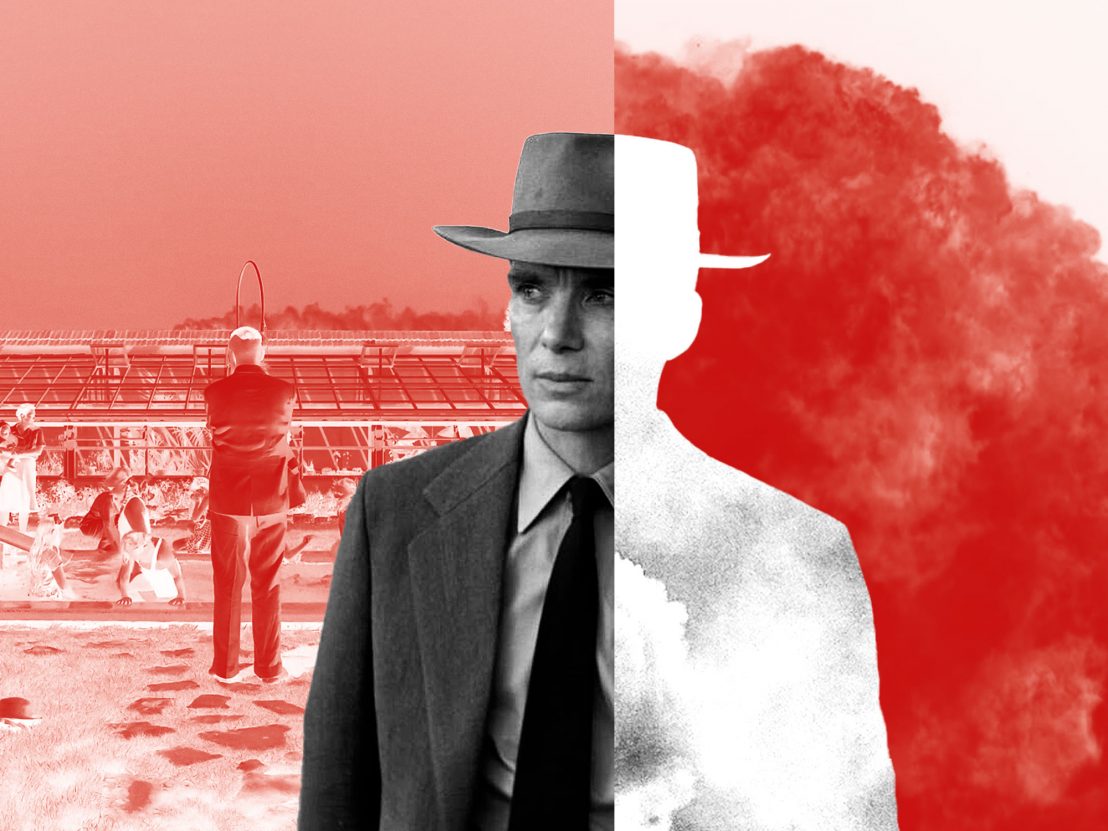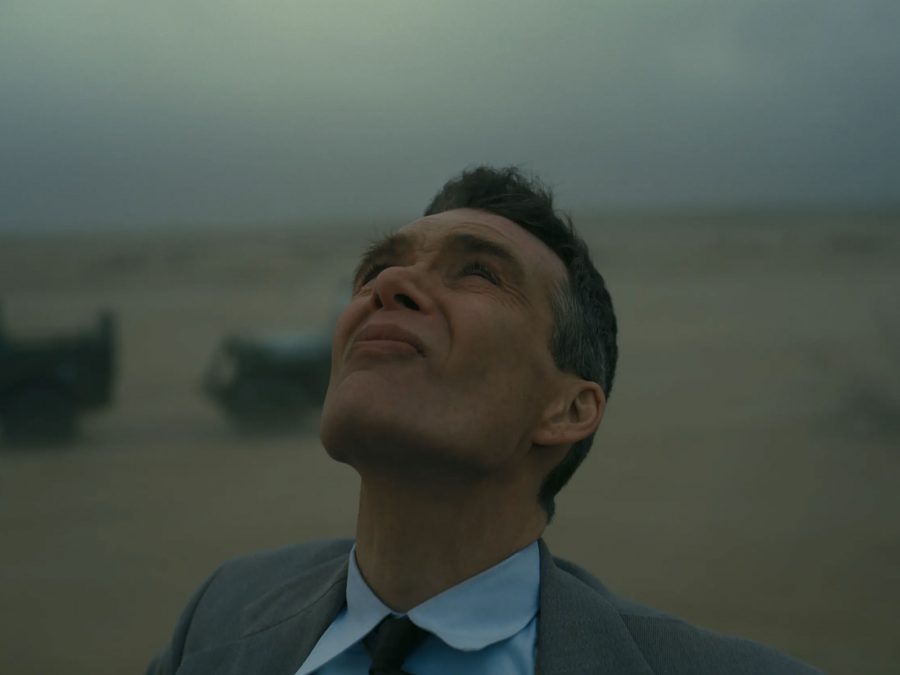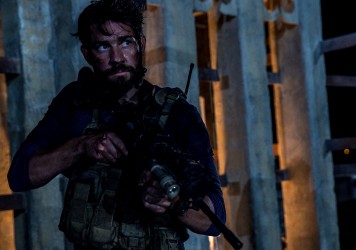
Three films nominated for Best Picture at this year’s Oscars are about ethnically-targeted massacres: The Zone of Interest, Jonathan Glazer’s penetrating Holocaust drama; Oppenheimer, Christopher Nolan’s sweeping biopic about the creator of the atomic bomb that killed hundreds of thousands of Japanese civilians; and Killers of the Flower Moon, a Western epic directed by Martin Scorsese which spotlights the systematic killings of the Osage people in early 20th century Oklahoma. Of the three, however, Killers of the Flower Moon is the only film to depict the perspective of victims. Criticisms of this were quickly waved off with the response that, not only were these omissions the point of these films, but also that the choice to do so was an ethical one.
For decades film and media scholars have concerned themselves with this very idea. In her incisive exploration of humanitarian ad campaigns, The Spectatorship of Suffering, Lilie Chouliaraki writes that this supposedly altruistic imagery, “…separates itself from the zone of suffering and deprives the suffering ‘others’ of their own sovereignty as human beings.” For Chouliaraki, to make suffering visible is often to inadvertently dehumanize it.
I have long sided with this belief. As a child, I would flip through my aunt’s Pulitzer photography book, wincing at images of little Vietnamese girls burning with Napalm and Bangladeshi men being beaten to death by mobs, and wish I had never looked. Over the years, I became more critical towards the hypervisibility of racialized bodies in media – concerned that those who bear witness to the suffering of people far away may be exhausted by these images and, deep in the recesses of the mind, shut themselves off to it. Empathy turns into apathy. Guilt turns into morbidity.
Critics of Holocaust films have echoed this sentiment. Most infamously, Michael Haneke derided Steven Spielberg’s seismic 1993 drama Schindler’s List for turning the Holocaust into entertainment. The solution that often arises in these debates is that filmmakers should strive towards objectivity, so as to not sensationalize suffering. “Responsibility,” argues Haneke, “entails enabling your audience to remain independent and free of manipulation.”

The Zone of Interest is a response to these criticisms. Jonathan Glazer has maintained that, in depicting the Holocaust, he wanted his film to appear as “unauthored” as possible – a goal he undoubtedly achieves. He captures his subjects, SS officer Rudolf Höss and his family, with wide austere shots and a muted colour palette, as they meander about their idyllic home which sits on the border of Auschwitz. To underscore the idea that evil can be frighteningly banal, Glazer places his visual focus on the mundane tasks of the family as they climb the ranks of the Nazi Party, rather than the abject horrors occurring on the other side of the fence. We are left to imagine these horrors through lush sound beds of smoke blasts, firearms, and piercing screams. This choice, according to Glazer, relies on the notion that audiences, “already know the imagery of the camps from actual archive footage.”
Ironically, Spielberg had also approached Schindler’s List this way, admitting he felt more like a “reporter than a filmmaker” during the shoot. You can see this in the film which, for all its traditional Hollywood emotionality, is shot with an often unsteady camera, and rendered in black and white to mimic the look of a war photograph.
Conversely, while Oppenheimer has been praised for its ethical omission, Nolan defended his decision not to depict the victims in Hiroshima or Nagasaki on the basis of subjectivity. If we’re to experience the film through the eyes of J. Robert Oppenheimer, then we must be as removed from the events in Japan as he was. After all, he found out when the bomb was dropped at the same time everyone else did. Like Glazer, Nolan said his film is “as much about what I don’t show as what I show.” The power, they argue, is the absence.
Regardless of their approach, what these directors seem to be reaching towards in depicting war and genocide is the truth. Some answer to atrocity.
In light of an ongoing genocide in Gaza, I find myself without answers. No doubt the spectatorship of suffering has taken its toll. When Aaron Bushnell martyred himself in front of the Israeli embassy in Washington D.C, people on my social media feed who had never before spoken out about Gaza rushed to share his image. Observing how clearly they were moved by the violence that had been wrought upon him, I am reminded which bodies we are trained to be moved by.

Yet, every day, Gazans plead with us to keep looking. Scrolling through endless images of a suffering made invisible, my rage compels me to act. As white phosphorus continues to fall, it becomes all too clear that genocide, as it occurs in real-time, is easy to ignore. So easy, that Glazer’s brave condemnation of the genocide in his Oscars acceptance speech was met with a smattering of applause and considerable public criticism. The Academy is notorious for a barely-concealed preference towards war films, but anti-war sentiments have historically been met with responses ranging from ambivalence to animus during the ceremony. Noise from the protestors outside the Dolby Theatre was completely inaudible to a largely impervious crowd inside. And so, the ethics of omission feel less tenable.
Like Lilie Chouliaraki, Susan Sontag also problematizes the spectatorship of suffering – particularly as it pertains to wartime imagery. Her primary issue, however, is with authorship: “Those who stress the evidentiary punch of image-making by cameras have to finesse the question of the subjectivity of the imagemaker.” There are a number of choices behind every image (framing, distance, composition, lighting) which undermine its veracity.
While The Zone of Interest and Oppenheimer may signal an “ethical” trend towards protecting the dignity of victims, these films are still authored. The Zone of Interest is executing a concept. Its imagery is so metaphorical that the film has in turn been likened to an art installation. But while this cool intellectualism effectively conveys its theme, banality is not the only marking of a Nazi. There is also sadism. Unlike his family, Höss was not detached. He inflicted daily cruelty upon his prisoners, striking with the fanatical hand of hatred. In a closely cropped shot, the empty, victimless sky behind Höss as he barks at the prisoners is deliberate.
While Oppenheimer was by no means a sadist, the public’s eagerness to cheer him on was born of the American war machine’s intentional and hateful dehumanization of Japanese people. In a now iconic gymnasium scene, Nolan conveys Oppenheimer’s anxiety by playing with extreme uses of light, sound, and depth of field. He also visualizes the unspeakable effects of Oppenheimer’s weapon – skin peeling off the face of a white woman, a charred, faceless corpse. The result is a scene which conveys not so much a specific concern for the Japanese people (whose treatment both overseas and at home takes a backseat in the film to the McCarthyism that follows it) but rather the psychic toll of what Oppenheimer could’ve unleashed onto the rest of the world and his own people. Nolan’s film steps into a Hollywood tradition of prying open the complicated minds of Great Men. This choice extends an American subjectivity that persists to this day when it’s asked to consider the atrocities its country has committed.
The “point” of these undeniably well-crafted films is compartmentalization – but it’s not hard to see the limits of a limited perspective. Even in Killers of the Flower Moon, I felt myself yearning for the perspective of the Osages, as the film slid to the sole viewpoint of the perpetrators by its third act.
We will continue to debate the responsibility of such films, but the suggestion that one is more ethical than the other contains an implication that only one kind of film should be made. Each film makes visible one truth of an impossibly vast whole. Like Schindler’s List, the choice to frame these massacres and genocides through the worldviews of the perpetrators may be every bit as distancing, dehumanizing, and ethical as making suffering visible.
Published 14 Mar 2024

This combustible and relentlessly-paced biography of the “father of the the atomic bomb” is a contender for Christopher Nolan’s best film.

Jonathan Glazer's stark film about the domestic routine of the Höss family next door to Auschwitz is a colossal, profoundly disturbing achievement in filmmaking.

Michael Bay’s controversial 13 Hours reminded us of a similarly gritty but less gung-ho Israeli film from 2007.